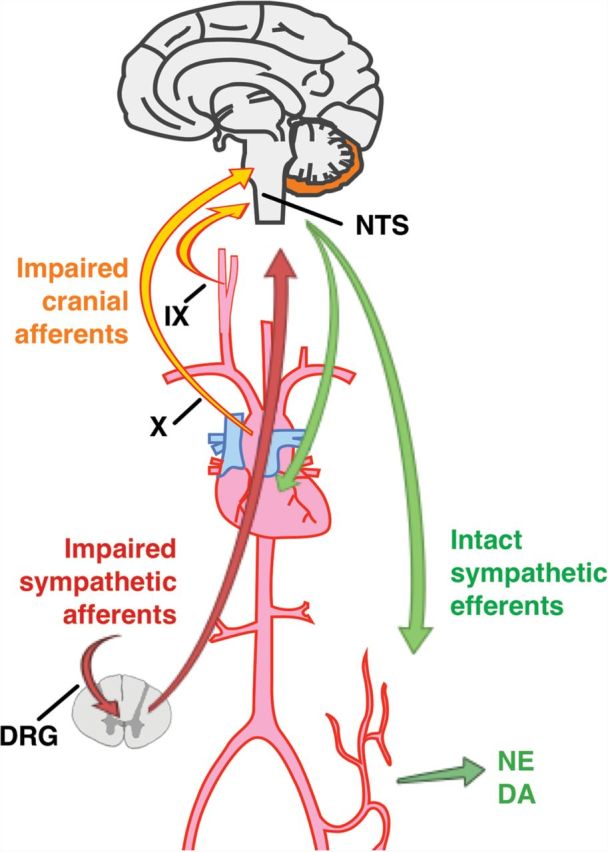Figure 1.

Autonomic regulatory pathways in familial dysautonomia. Involvement of afferent fibers in IX and X cranial nerves results in loss of sensory input from arterial baroreceptors to the brainstem nucleus tractus solitarius (NTS). Involvement of dorsal root ganglia (DRG) impairs sensory input from visceral organs carried in sympathetic afferent fibers, which synapse the level of the spinal cord. Efferent sympathetic fibers to the heart and vasculature remain functionally intact as evidenced by release of norepinephrine (NE) and dopamine (DA) into the circulation in response to emotional arousal. Complete failure of afferent autonomic signaling gives rise to the unique cardiovascular phenotype in familial dysautonomia.
